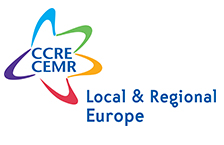Ten keys to success
IMPORTANT
Thank you for your interest. Unfortunately, this website in not operational anymore. A new website for Twinning and Partnership Building is under development and will be available in the upcoming months.
In case you want to register for twinning and partnership building, please wait for the new platform.
A twinning is not something to be improvised, it must be carefully prepared. To help you cover all the bases, here are a few tips to help you make your twinning a success:
1st Key: Find the right partner(s)
Finding the perfect partner(s) is obviously the first step! Each twinning is unique, however in most cases the right twinning partner should be similar to you on a number of counts. These can be the number of inhabitants, the geographic location, the economic activities, historic links with other communities, the main social or environmental issues… You should spend time with the representatives of your proposed partner town, to make sure that you each have the same understanding and aspirations for the new link.
2nd Key: Involve the citizens and the whole community
There can be no twinning without the active participation of the inhabitants. Elected representatives and civil servants can often be the driving force behind projects, but they should not be the only people involved. Schools, sport clubs, leisure groups, senior citizens organizations, and other local community associations should all be involved. At the same time, the twinning needs to be visible for every citizen to feel involved. For instance, signs can be posted at the entry of the town hall, and your local newsletter and website can feature news about the twinning. It is important to communicate the impact and benefits of twinning to the wider public, and in particular to the media, to create an accurate image of your twinning.
3rd Key: Include a European dimension
In the European Union, a good twinning link should help to strengthen active European citizenship, by creating links between citizens, by aiding the promotion of European unity, and helping to forge a European identity. By allowing people to experience the daily life of others, to debate and discuss important issues of the day, and to discover new cultures and the languages of their partners, twinning helps citizens to understand that they belong to one community of values.
4th Key: Define common objectives
What do we want from this twinning? This should be the first question when establishing a twinning link. You and your partner should define together clear objectives and types of activities, and where possible agree from the outset on dates by which an assessment of the project can be established. If this is not done, the twinning may well fail, due to misunderstandings or misperceptions. It is useful to reassess the objectives and actions from time to time, to make sure you are all committed to the same priorities for the twinning.
5th Key: Create a support structure
Over time, the energy behind the partnership can weaken. A small but active team, in each of the twinned towns, can help to maintain connections, develop the partnership through new projects, seek financing… This twinning “motor” can be a sort of steering committee for the twinning, or an association accredited by the municipality which works in cooperation with the town and its other associations, as well as with the partner town.
6th Key: Work with schools and young people
There are many ways of involving your schools in twinning. Pupil and student exchanges are often one of the high points of a partnership, and can help to stimulate interest in learning the language of the partner country. These actions tend to involve a major part of inhabitants since, by their nature, they also involve parents, teachers and school staff, student associations, etc.
Another way is to link twinnings and eTwinning, the eLearning programme of the European Union which promotes school collaboration in Europe through the Internet. It provides support, tools and services to make it easy for schools to form short or long term partnerships in any subject area.
7th Key: Address the major issues of our day
Activities developed through twinning links can help citizens to be aware of European current issues; this is particularly true for young people. These issues can be about the environment, the future of Europe, human rights, peace, or social inclusion…. or even football or other sports!
8th Key: Plan a sustainable relationship
A good twinning link must be able to withstand the test of time, and not merely reflect the prevailing mood of the day in the city council. Strong friendships and true links of solidarity between the citizens of different towns need time to grow. Only by persisting over the years can one town come to count on another, in the event of disasters for instance.
9th Key: Look to the future and build the basis for new exchanges
A twinning link can create an ideal environment in which to develop new cooperation techniques. Exchange of experience as well as joint reflection on specific issues can help find solutions or bring improvements.
10th Key: Develop a budget and look after the finances
Last but not least, look after the finances! Any trans-national partnership is bound to cost some money, however carefully the partnership events are planned and organized.
It is helpful if the local authorities can allocate an annual budget, even if it is not a very large sum, to keep the momentum going. And local twinning associations are often very active in local fund-raising – which in itself can bring benefits among the home community.
You can find more information on how to fund your twinning in the financial support section, in particular in relation to funding from the European Union.


